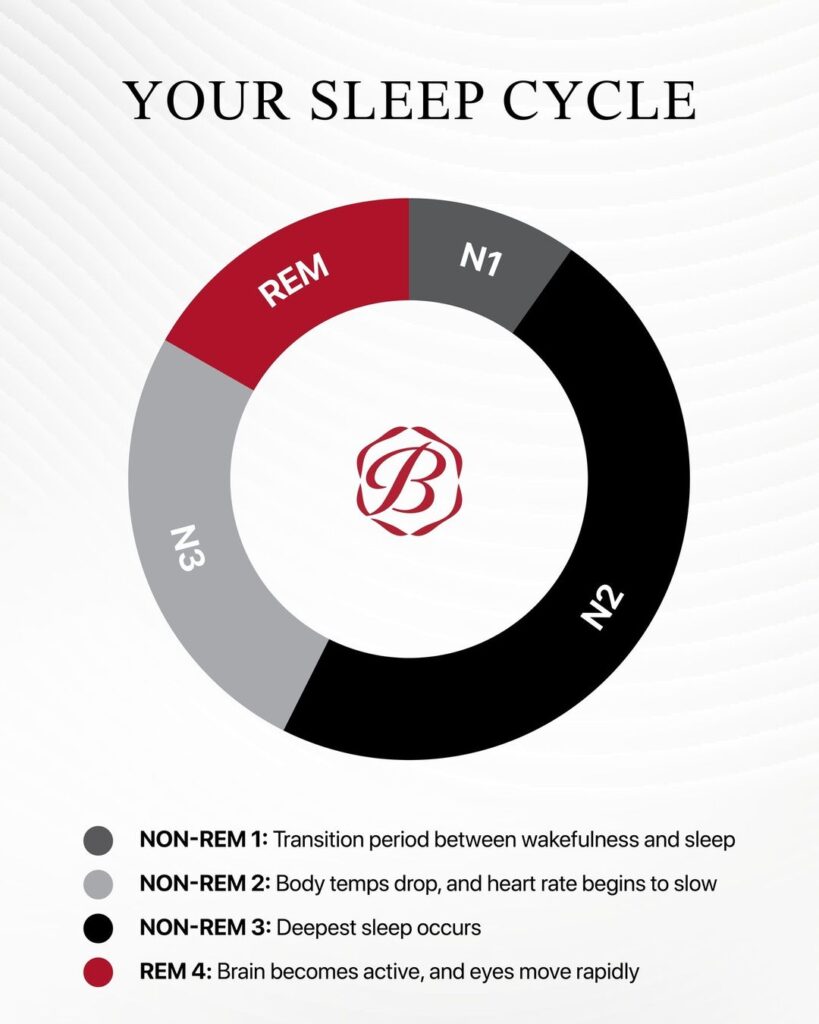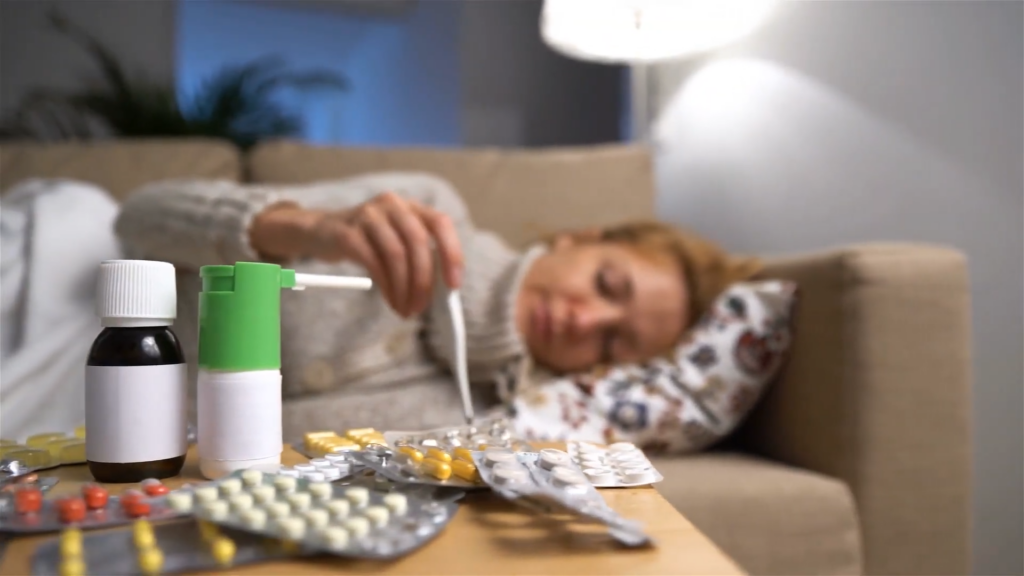A refreshing night’s sleep is what everyone needs after a day of continuous hard work and stress. But, for some, sleep isn’t that simple. It can become a debilitating disorder causing sleep attack or excessive daytime sleepiness. This article aims to elucidate sleep attacks, their causes, symptoms, and available treatments.
Understanding Sleep
Importance of Sleep
Sleep is vital for human well-being. It aids cognitive function, emotional well-being, and overall physical health. Disruptions to normal sleep patterns can have significant adverse effects on these essential aspects of life.
The Sleep Cycle
Our sleep comprises two primary sleep stages: REM (rapid eye movement) and non-REM sleep, each contributing uniquely to our restorative sleep process.
• REM Sleep
REM sleep is when most dreaming occurs and your brain and body become energized. It’s essential for improving memory, learning, and mood.
• Non-REM Sleep
Non-REM sleep can be further divided into three stages: N1, N2, and N3, each deeper than the last. This sleep phase is crucial for body repair and growth due to the release of essential hormones.
Circadian Rhythm
The circadian rhythm, often referred to as your body clock, is a natural system that regulates sleepiness and wakefulness over a 24-hour period. Disruption to the circadian rhythm can lead to sleep disorders.
Common Sleep Disorders
There are several types of sleep disorders, including insomnia, sleep apnea, and narcolepsy, that can lead to sleep attacks or excessive sleepiness.
Insomnia
Insomnia is characterized by difficulty falling asleep or staying asleep, resulting in non-refreshing sleep and daytime tiredness, which can lead to sleep deprivation.
Sleep Apnea
Sleep apnea is a serious disorder where your breathing repeatedly stops and starts during sleep, causing lower sleep quality.
Narcolepsy
Narcolepsy is a neurological disorder that impairs the brain’s ability to control sleep-wake cycles, often leading to sleep attacks.
In-Depth into Sleep Attacks
Sleep attacks, also known as excessive daytime sleepiness, is a major symptom of sleep disorders like narcolepsy.
What is a Sleep Attack?
A sleep attack, also known as excessive daytime sleepiness, involves suddenly falling asleep without warning during the day, even after having sufficient night sleep.
These episodes are characterized by a rapid onset of sleep, interrupting normal wakefulness and daily activities.
Individuals experiencing sleep attacks may find themselves unable to resist the overwhelming urge to sleep, regardless of the circumstances or location.
This sudden sleep onset can occur at any time during the day, often leading to functional impairment and potential safety concerns.
Connection to Narcolepsy
Narcolepsy is often the underlying cause of sleep attacks. People with narcolepsy may experience excessive daytime sleepiness and can fall asleep at inappropriate times.
Causes of Sleep Attacks
Sleep attacks can be due to various causes, such as irregular sleep schedules, certain medications, and other sleep disorders like sleep apnea or insomnia.
Symptoms Associated with Sleep Attacks
Sleep attacks are characterized by sudden bouts of sleep during the day. One of the primary symptoms of sleep attacks is excessive daytime sleepiness, also known as fatigue during the day.
Other associated symptoms include cataplexy (a sudden muscle weakness), hypnagogic hallucinations (dream-like visions at the start of sleep), and sleep paralysis (an inability to move or speak while falling asleep or waking up).
Triggers of Sleep Attack
Sleep attacks, characterized by sudden and uncontrollable episodes of falling asleep during the day, can be triggered by various factors.
Understanding these triggers can help individuals with sleep disorders, such as narcolepsy, manage their condition more effectively.
Here are some common triggers of sleep attacks:
Emotional Triggers
• Strong emotions: Intense emotions like laughter, surprise, or anger can trigger sleep attacks in individuals with narcolepsy. These emotional triggers may lead to a sudden loss of muscle tone known as cataplexy, causing temporary paralysis and sleepiness.
• Stress: High levels of stress can exacerbate sleep attacks. Stressful situations, anxiety, and emotional tension can contribute to increased daytime sleepiness and make it challenging to stay awake.
Irregular Sleep Patterns
• Inconsistent sleep schedule: Frequent changes in sleep patterns or irregular sleep routines can disrupt the body’s natural circadian rhythm, making individuals more susceptible to sleep attacks.
• Insufficient nighttime sleep: Lack of adequate sleep at night can trigger excessive daytime sleepiness and increase the likelihood of experiencing sleep attacks throughout the day.
Monotonous or Sedentary Activities
• Passive activities: Engaging in monotonous or passive activities, such as watching TV, reading, or sitting in a quiet environment, can induce drowsiness and trigger sleep attacks.
• Prolonged periods of inactivity: Long periods of sitting or remaining still without physical stimulation can contribute to sleep attacks. Lack of movement and physical engagement can intensify sleepiness.
Boredom or Lack of Stimulation
• Boring or repetitive tasks: Engaging in repetitive or uninteresting tasks, such as long drives, monotonous work, or passive activities, can contribute to feelings of drowsiness and trigger sleep attacks.
• Lack of sensory stimulation: Environments with minimal sensory input or limited external stimulation can induce a state of lethargy and make individuals more prone to experiencing sleep attacks.
Diagnosis of Sleep Attack
Diagnosing sleep attacks involves recognizing the sleep symptoms, performing sleep studies, and ruling out other sleep disorders.
Role of Sleep Studies
Sleep studies, including polysomnography and multiple sleep latency tests, are used to diagnose narcolepsy and other sleep disorders that cause sleep attacks.
ICSD and DSM-5
The International Classification of Sleep Disorders (ICSD) and the Diagnostic and Statistical Manual of Mental Disorders (DSM-5) provide the criteria for diagnosing narcolepsy and other sleep disorders.
Treatment Options for Sleep Attack
Although there is no cure for sleep attacks, various sleep treatments can manage the symptoms effectively.
Medication
Medication like Modafinil and Xyrem are commonly prescribed to manage excessive daytime sleepiness and cataplexy in narcolepsy.
These medications can promote better sleep quality and reduce the frequency of sleep attacks.
However, it’s important to note that sleep medication should be used under the guidance of a healthcare professional, as they may have potential side effects and can be habit-forming.
CPAP Machines for Sleep Apnea
Continuous Positive Airway Pressure (CPAP) machines are used to treat sleep apnea, which can help reduce sleep attacks.
Sleep Therapy
Cognitive Behavioral Therapy for Insomnia (CBT-I) can improve sleep habits.
Lifestyle Changes For Sleep
Healthy sleep habits, regular exercise, and a balanced diet can significantly reduce sleep attacks’ frequency and intensity.
Living with Sleep Attacks
Living with sleep attacks can be challenging, but support from healthcare professionals and patient support groups can help manage the condition.
Impact on Daily Life
Sleep attacks can significantly affect work, school, and social life. But with appropriate treatment and lifestyle adjustments, these challenges can be overcome.
Personal Stories and Case Studies
Personal stories and case studies can provide invaluable insights into living with sleep attacks and offer encouragement to those facing similar challenges.
Sleep Tips: Enhancing Your Sleep Hygiene
Adopting better sleep hygiene practices can mitigate the effects of sleep attacks and improve overall sleep quality.
Healthy Sleep Schedule
Maintaining a regular sleep schedule, even on weekends, can help regulate your body’s clock and improve sleep quality.
Sleep Tracking Devices
Devices like Fitbit or Oura Ring can help monitor sleep patterns and identify potential disruptions.
Lifestyle Changes
Avoiding caffeine, establishing a calming pre-sleep routine, and optimizing your sleep environment can enhance sleep quality.
Ongoing Research and Future Outlook
Scientific research into sleep attack is ongoing, offering hope for more effective treatments in the future.
Role of Sleep Researchers and Scientists
Researchers and scientists are continually working to unravel the complexities of sleep disorders, which will lead to better diagnostic tools and treatments.
Latest Research
The latest research offers new insights into the causes and potential treatments for sleep disorders, bringing hope to those suffering from sleep attacks.
Mattresses and Sleep Attack
The quality of our mattresses plays a significant role in promoting restful sleep and minimizing sleep disturbances, including sleep attacks.
A supportive and comfortable mattress can contribute to better sleep alignment and alleviate pressure points, allowing for more uninterrupted sleep.
Conclusion
Sleep attacks can be challenging to live with, but with the right diagnosis and treatment, they can be managed effectively. By understanding sleep, adopting healthy sleep habits, and seeking professional help when needed, a good night’s sleep can become a reality for everyone.
Sleep Attack FAQ
What is it like to have a sleep attack?
– During a sleep attack, a person might feel a sudden and irresistible wave of extreme fatigue and drowsiness. It can be described as feeling like their body and mind are being forcefully pulled towards sleep, making it difficult to stay awake or concentrate on anything else. The urge to lie down and sleep immediately becomes overwhelming, and fighting against it can be a constant struggle.
Can you prevent a sleep attack?
– While preventing a sleep attack can be difficult, there are practical steps one can take to manage the condition. Establishing a consistent sleep schedule, prioritizing adequate rest, practicing healthy sleep habits, and seeking guidance from a healthcare professional regarding potential medications or treatments can all contribute to minimizing the occurrence of sleep attacks.
What can you do if you have a sleep attack in public?
– If you experience a sleep attack in public, finding a safe and comfortable place to rest momentarily can help. Consider finding a quiet corner, a bench, or any available seating area where you can close your eyes and rest briefly. If possible, inform a person nearby, such as a friend, coworker, or a staff member, about your condition, so they can offer assistance or keep an eye out for your well-being.






